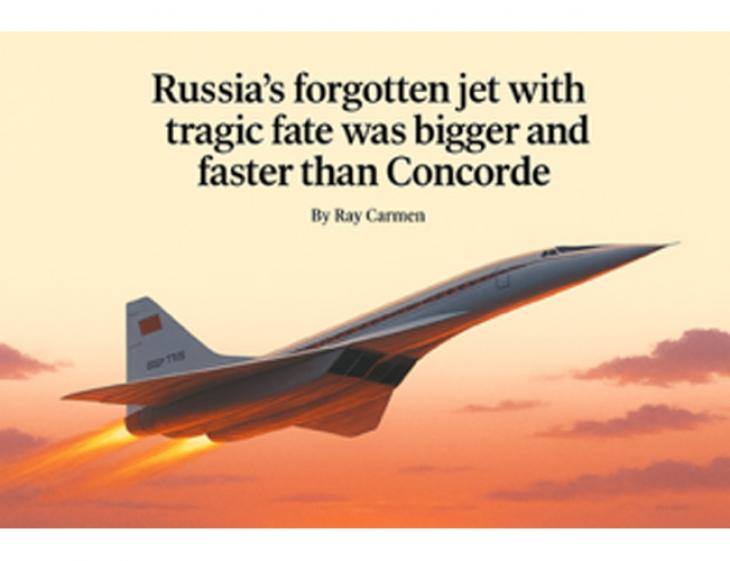
By Publisher Ray Carmen
Once upon a time, in the heart of the Cold War, the Soviet Union dared to dream higher and faster than the West. Their creation—the Tupolev Tu-144, dubbed the “Concordski”—was a breathtaking marvel that soared beyond the boundaries of its era. Bigger, faster, and more ambitious than the famed Concorde, this silver arrow of the skies symbolised Soviet pride and engineering audacity.
Yet behind the thunder of its engines lay tragedy. Rushed to outpace the West, the Tu-144’s maiden promise soon met a cruel twist of fate. In 1973, during the Paris Air Show, the pride of Russia disintegrated in mid-air before horrified crowds—a catastrophe that sealed its destiny. While Concorde went on to define luxury supersonic travel, the Tu-144 became a ghost of what might have been.
For a fleeting moment, it had triumphed: cruising at Mach 2.2, higher and faster than any commercial aircraft before or since. But its glory was short-lived—haunted by technical flaws, safety fears, and a political race that left little room for perfection.
Today, the Tu-144 rests silently in museums, a relic of lost ambition—a gleaming testament to humanity’s ceaseless desire to conquer the sky, even when the dream burns too hot to hold.




